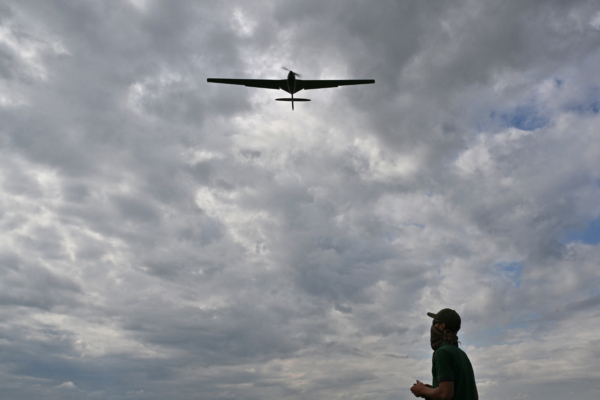【Epoch Times, September 17, 2025】After multiple incidents of Russian drones entering NATO airspace recently, the European Union is accelerating the use of funds to create a real-time collaborative “drone wall” on the eastern border, utilizing technology validated on the Ukrainian battlefield to combat persistent harassment and attrition warfare of low-altitude, small targets at low cost.
EU Commission President Ursula von der Leyen made a speech in the European Parliament in Strasbourg, France last Wednesday (September 10), clearly calling for the establishment of a “drone wall”.
Behind this call is a plan that has been brewing for months to protect the over 3000-kilometer border extending from northern Norway to southern Poland. The first step will involve deploying a set of AI-operated drone reconnaissance systems, supplemented by a dense network of ground sensors, satellite monitoring, and mobile counteraction platforms to detect and disrupt potential threats. The project, led by Germany, has now gathered the three Baltic countries (Estonia, Latvia, Lithuania), as well as Norway, Finland, and Poland, as they all share borders with Russia or its ally Belarus.
Von der Leyen also announced the establishment of a “Drone Alliance” with Ukraine. She stated that this alliance aims to achieve a collaborative development, deployment, and maintenance of real-time responsive drone defense capabilities, with an initial funding of about 6 billion euros to transform Ukraine’s frontline innovations into European joint capabilities and battlefield advantages.
Since 2022, Ukraine has faced small, low-altitude drone targets like the Iranian-made “Shahed”, developing a nationwide network of acoustic sensors, combined with mobile firing teams equipped with anti-aircraft guns and heavy machine guns, forming a low-cost, scalable defense combination under conditions where traditional radars struggle to consistently detect.
Lithuania and Latvia have begun to emulate the practice of acoustic detection combined with mobile firepower; Kyiv has also provided Poland, which recently faced Russian drone invasions of its airspace, with anti-drone combat training.
To quickly fill the defense gap on the eastern flank, the EU approved the “Security Action For Europe (SAFE)” loan plan at the end of May this year, with a total upper limit of 150 billion euros, providing member states with low-interest, long-term loans for joint defense capabilities procurement.
The latest announcement shows that 19 countries have applied, with Poland receiving the largest quota (approximately 43.7 billion euros), highlighting the priority to strengthen defense along the eastern border adjacent to Russia. SAFE aims to promote joint procurement, enhance interoperability, and expand European defense industrial capacity, with the first batch scheduled for disbursement as early as the beginning of 2026.
On the technological front, defense enterprises like Germany’s Hensoldt are participating in the European Secure Sky Initiative (ESSI) and other multilateral frameworks to establish integrated air and missile defense systems covering Europe and NATO, enhancing protection against missile and drone threats.
Max Enders, Business Development Director at Tytan, a startup headquartered in Munich, told the Financial Times that Europe currently struggles to effectively counter threats and must accelerate its involvement in the drone – anti-drone arms race. The company’s drone interceptor has already been deployed on the Ukrainian frontline.
From September 9 to 10, at least 19 Russian-made drones entered Polish airspace during the night, prompting NATO aircraft and ground-based air defenses from multiple countries to respond urgently; Romania subsequently reported similar intrusion incidents.
Following the incident, NATO Secretary General Mark Rutte condemned Russia’s actions as “reckless and extremely dangerous” for violating allied airspace. NATO and various media outlets revealed that French Air Force Rafale fighters were conducting missions over Poland’s airspace, joined by Polish and Dutch fighter jets.
Before the new system is activated, NATO launched the “Eastern Sentry Operation” on September 12, dispatching aircraft, ships, and reconnaissance assets from Finland to Bulgaria along the line to patrol and respond to the daily Russian drone disturbances temporarily.

